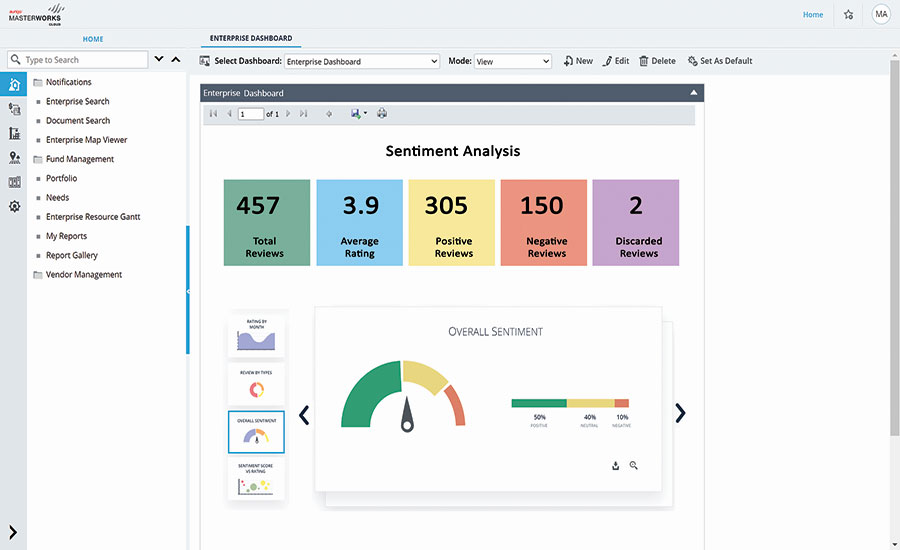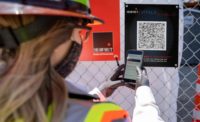Keeping an eye on how construction projects are progressing is often a matter of emailing a few key people and hoping they get back to you. But when managing large capital projects, public owners now have a bit of artificial intelligence to keep an eye on things.
Aurigo’s Masterworks software is used by many state departments of transportation and municipalities to manage their construction portfolios. The 2021 edition now includes a sentiment analysis function that can study the language of project documents to assess a project’s overall mood.
“This [algorithm] uses natural language processing to scan through project files, change orders and other communications,” explains Balaji Sreenivasan, Aurigo chief executive officer. “It can see if the language being used is positive, stressful or angry, and give the project a red, yellow or green status.” These broad classifications of project sentiments are visible on the Masterworks dashboard.
Using sentiment analysis on written documents is not a new application for machine-learning algorithms, but it hasn’t been used extensively yet in construction.
“Using a dashboard, managers will quickly be able to view the health of projects based on comments, issues and risks that have been reported,” says David Wooldridge, Nevada DOT’s chief IT manager. He says another area that may hold promise for sentiment analysis is in public comment periods the DOT holds for potential projects, plans and regulations.
According to Sreenivasan, sentiment analysis is just the low-hanging fruit for AI in construction. He says it’s only the first step toward bringing deeper machine-learning functionality into the Masterworks platform. “What we’re really getting into in the next six months is predictive analysis for project cost and scheduling,” he explains.
The key to any machine-learning algorithm is the size and quality of the data pool that is fed into it. Many efforts to bring machine learning and AI to the contractor’s side of construction have been slowed by the limited amount of project data any given contractor has to train an algorithm.
Sreenivasan thinks the sheer volume of projects that DOTs and municipalities oversee is a good case for machine learning. “When a state or a city starts using our product to manage five to six thousand projects a year, even by end of year that’s enough data to use for [training an AI].” The similarity of the scope and type of projects done by municipalities and states also helps, he adds. “I think the benefits of AI, machine learning and predictive analysis are much more suited for the owner than the contractor.”






Post a comment to this article
Report Abusive Comment